Health Care > QUESTIONS & ANSWERS > Abrams' Clinical Drug Therapy: Rationales for Nursing Practice 12th Edition Frandsen Test Bank (All)
Abrams' Clinical Drug Therapy: Rationales for Nursing Practice 12th Edition Frandsen Test Bank
Document Content and Description Below
A woman has been prescribed paroxetine hydrochloride, which is an antidepressant agent administered in pill form. The medication is administered for her obsessivecompulsive disorder. This medicatio... n will produce which of the following effects? A) Curative B) Systemic C) Local D) Parenteral Ans: B Feedback: Drugs that produce systemic effects are taken into the body, circulated through the bloodstream to their sites of action in various body tissues, and eventually eliminated from the body. Curative agents are given to cure a disease process. In this case, paroxetine hydrochloride will control the symptoms but not cure the disorder. Drugs with local effects, such as sunscreen and local anesthetics, act mainly at the site of application. Paroxetine hydrochloride is not administered parenterally. Parenteral agents are administered subcutaneously, intramuscularly, or intravenously. 2. A patient has been prescribed an antibiotic. This medication is a naturally occurring substance that has been chemically modified. What is another name for this type of medication? A) Synthetic drug B) Semisynthetic drug C) Biotechnology drug D) Prototype drug Ans: B Feedback: Semisynthetic drugs (e.g., many antibiotics) www.nursylab.com Feedback: Semisynthetic drugs (e.g., many antibiotics) are naturally occurring substances that have been chemically modified. Synthetic drugs are more standardized in their chemical characteristics, more consistent in their effects, and less likely to produce allergic reactions. Biotechnology drugs involve manipulating DNA and RNA and recombining genes into hybrid molecules that can be inserted into living organisms. Prototype drugs are the first drug of a particular group to be developed. 3. A patient is administered morphine. Morphine is a prototypical drug that can be classified in different ways. Which of the following classifications applies to morphine? A) Central nervous system depressant B) Central nervous system stimulant C) Anti-inflammatory D) Antihypertensive Ans: A Feedback: Drugs are classified according to their effects on particular body systems, their therapeutic uses, and their chemical characteristics. For example, morphine can be classified as a central nervous system depressant and a narcotic or opioid analgesic. A central nervous system stimulant increases attention and raises mood. An anti-inflammatory agent decreases inflammation at the site of tissue or joint inflammation. An antihypertensive agent reduces blood pressure. 4. A patient is administered amoxicillin (Amoxil). The generic name of this medication indicates that it belongs to which drug group? A) Selective serotonin reuptake inhibitors B) Diuretics C) Penicillins D) ACE inhibitors Ans: C Feedback: www.nursylab.com Ans: C Feedback: The generic name often indicates the drug group (e.g., drugs with generic names ending in “cillin” are penicillins). Selective serotonin reuptake inhibitors are medications that have antidepressant effects; SSRI is a broad classification, not a generic name. Diuretics are medications that increase urine output; diuretic is a broad classification, not a generic name. ACE inhibitor is the broad classification for the angiotensin-converting enzyme inhibitors, not the generic name. 5. The administration of diphenhydramine (Benadryl), which is an over-the-counter medication, is regulated by which government agency? A) Public Health Service B) Federal Trade Commission C) Occupational Safety and Health Administration D) Food and Drug Administration Ans: D Feedback: The Food and Drug Administration approves drugs for over-the-counter availability, including the transfer of drugs from prescription to OTC status, and may require clinical trials to determine the safety and effectiveness of OTC use. The Public Health Service is regulated by the state to maintain the health of individual citizens of the state. The Federal Trade Commission regulates imports and exports throughout the nation. The Occupational Safety and Health Administration regulates safety within the workplace. 6. The administration of anabolic steroids is regulated by which of the following laws? A) The Food, Drug, and Cosmetic Act of 1938 B) The Comprehensive Drug Abuse Prevention and Control Act C) The Harrison Narcotic Act D) The Shirley Amendment www.nursylab.com C) The Harrison Narcotic Act D) The Shirley Amendment Ans: B Feedback: The Comprehensive Drug Abuse Prevention and Control Act regulates the manufacture and distribution of narcotics, stimulants, depressants, hallucinogens, and anabolic steroids. The Food, Drug, and Cosmetic Act of 1938 revised and broadened FDA powers and responsibilities, giving the FDA control over drug safety. The Harrison Narcotic Act restricted the importation, manufacture, sale, and use of opium, cocaine, marijuana, and other drugs that the act defined as narcotics. The Shirley Amendment of 1912 prohibited fraudulent claims of drug effectiveness. 7. A nurse is responsible for maintaining an accurate count and record of the controlled substances on the nursing unit. This nursing action is regulated by which of the following laws or agencies? A) Food, Drug, and Cosmetic Act of 1938 B) Public Health Service C) Drug Enforcement Administration D) Shirley Amendment Ans: C Feedback: The Drug Enforcement Administration enforces the Controlled Substances Act. Under this enforcement, nurses are responsible for storing controlled substances in locked containers, administering them only to the people for whom they are prescribed, recording each dose given, and maintaining an accurate inventory. The Food, Drug, and Cosmetic Act of 1938 revised and broadened FDA powers and responsibilities, giving the FDA control over drug safety. The Public Health Service is regulated by the state to maintain the health of individual citizens of the state. The Shirley Amendment of 1912 prohibited fraudulent claims of drug effectiveness. www.nursylab.com 8. In Phase I clinical trials, the potential uses and effects of a new drug are determined by which of the following methods? A) Administering doses to healthy volunteers B) Administering doses to people with the disease C) Administering in placebo-controlled design D) Calculating the risk-to-benefit ratio Ans: A Feedback: Phase I studies allow for the administration of the medication to healthy volunteers to determine safe dosages, routes of administration, absorption, metabolism, excretion, and toxicity. In Phase II studies, a few doses are given to a certain number of subjects with the disease or symptom for which the drug is being studied and responses are compared with those of healthy subjects. Placebo-controlled designs are used in the Phase III studies, in which half of the subjects receive the new drug and half receive the placebo. Calculating the risk-to-benefit ratio is used in Phase II studies to determine whether the potential benefits of the drug outweigh the risks. 9. A new medication for the treatment of Alzheimer's disease is being administered to a group of subjects with the disease. The subjects receiving this medication are unaware of whether they are being administered the medication or whether they are receiving a placebo. This testing occurs in which phase of the drug approval process? A) Phase I B) Phase II C) Phase III D) Phase IV Ans: C Feedback: In Phase III, the drug is given to a larger and www.nursylab.com Feedback: In Phase III, the drug is given to a larger and more representative group of subjects. In double-blind, placebo-controlled designs, half of the subjects receive the new drug and half receive a placebo (an inactive substance similar in appearance to the actual drug), with neither subjects nor researchers knowing which subjects receive which formulation. In Phase I, a few doses are given to a certain number of healthy volunteers to determine safe dosages, routes of administration, absorption, metabolism, excretion, and toxicity. In Phase II, a few doses are given to a certain number of subjects with the disease or symptom for which the drug is being studied and responses are compared with those of healthy subjects. In Phase IV, the FDA evaluates the data from the first three phases for drug safety and effectiveness, allows the drug to be marketed for general use, and requires manufacturers to continue monitoring the drug's effects. 10. Which organization is responsible for approving new drugs in the United States? A) American Medical Association B) American Pharmaceutical Association C) Food and Drug Administration D) United States Pharmacopeia Ans: C Feedback: The Food and Drug Administration is responsible for approving new drugs in the United States. The American Medical Association represents the physicians of the United States. The American Pharmaceutical Association represents the pharmacists of the United States. The United States Pharmacopeia was adopted in 1906 and is issued every 5 years under the supervision of a national committee of pharmacists, scientists, and physicians. [Show More]
Last updated: 2 years ago
Preview 1 out of 557 pages
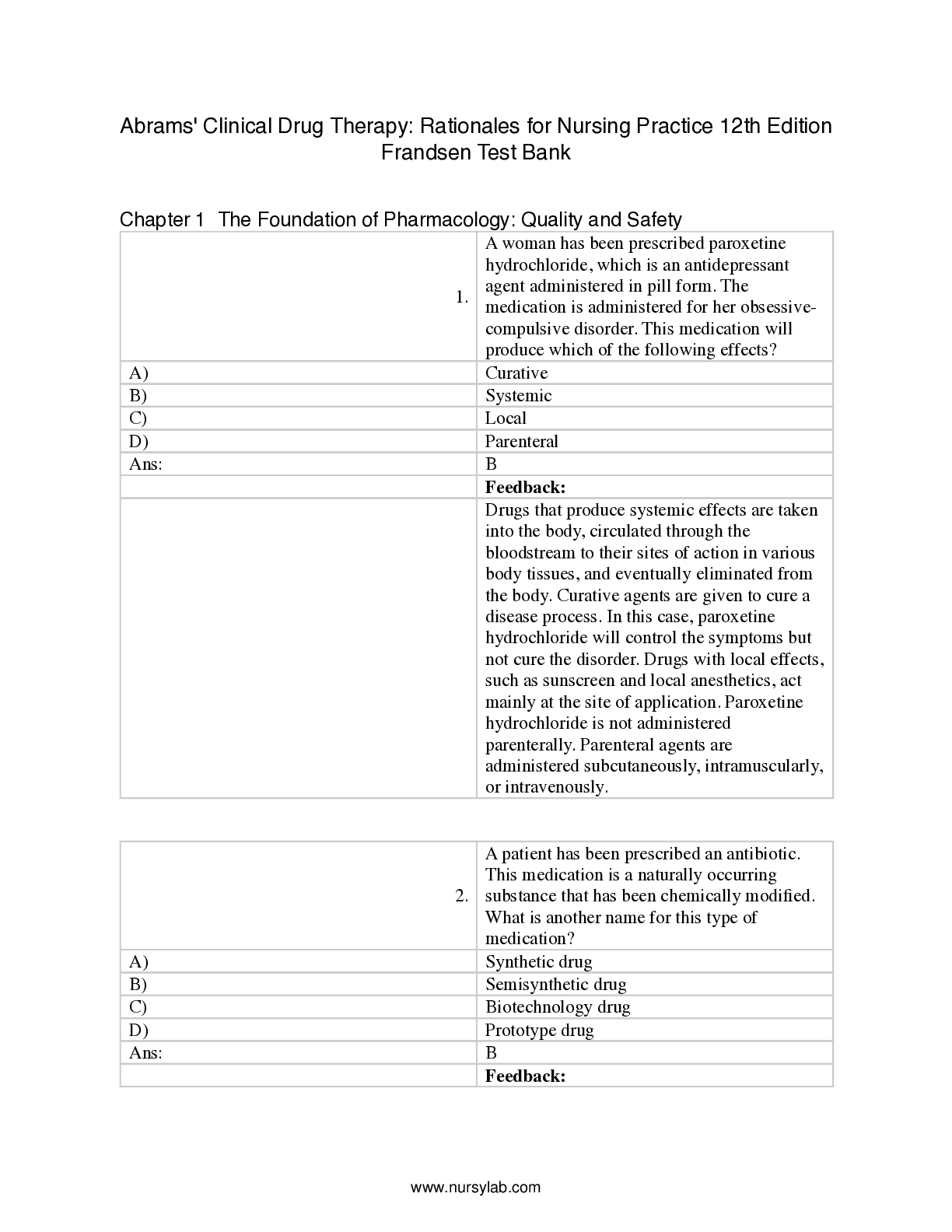
Buy this document to get the full access instantly
Instant Download Access after purchase
Buy NowInstant download
We Accept:

Reviews( 0 )
$9.50
Can't find what you want? Try our AI powered Search
Document information
Connected school, study & course
About the document
Uploaded On
Jan 31, 2023
Number of pages
557
Written in
Additional information
This document has been written for:
Uploaded
Jan 31, 2023
Downloads
0
Views
113


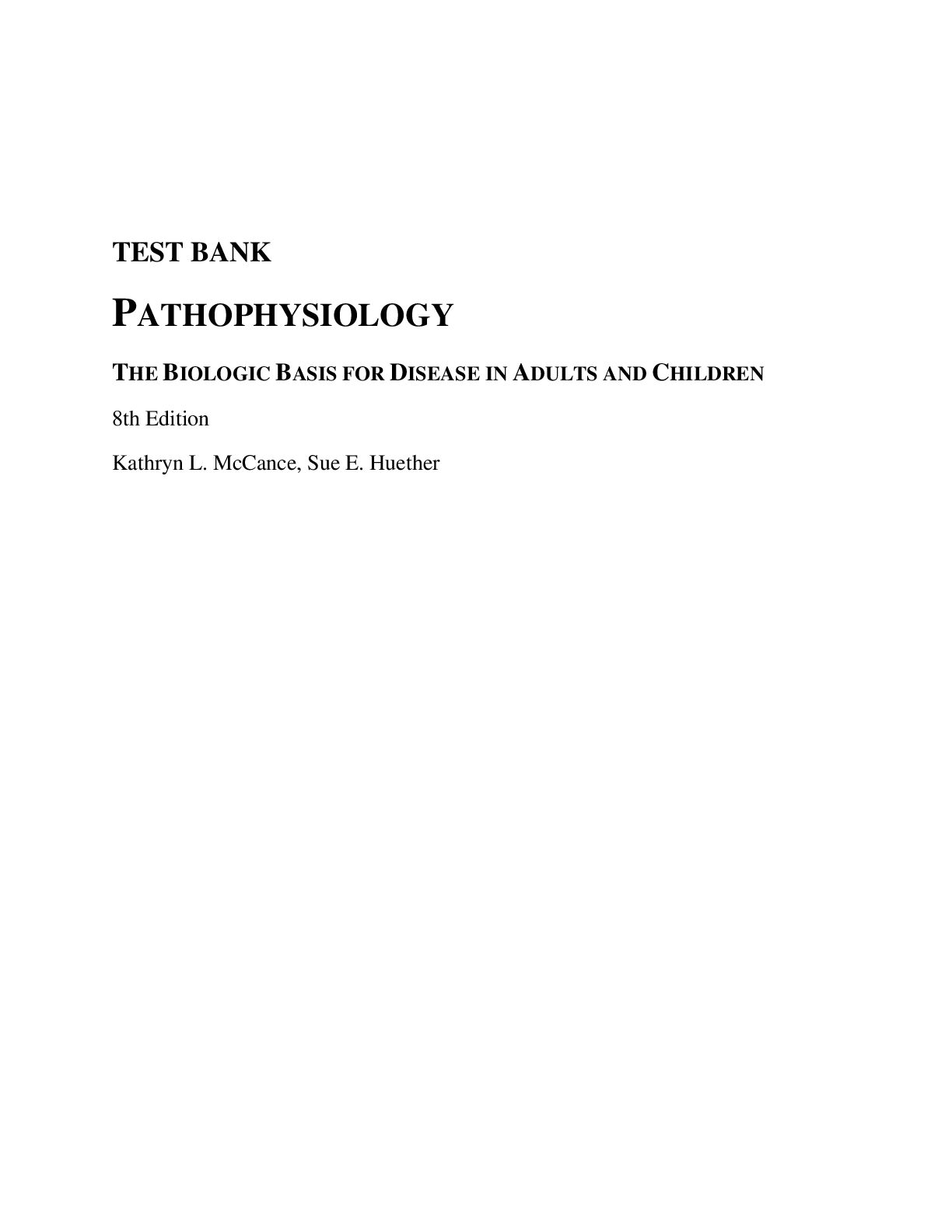


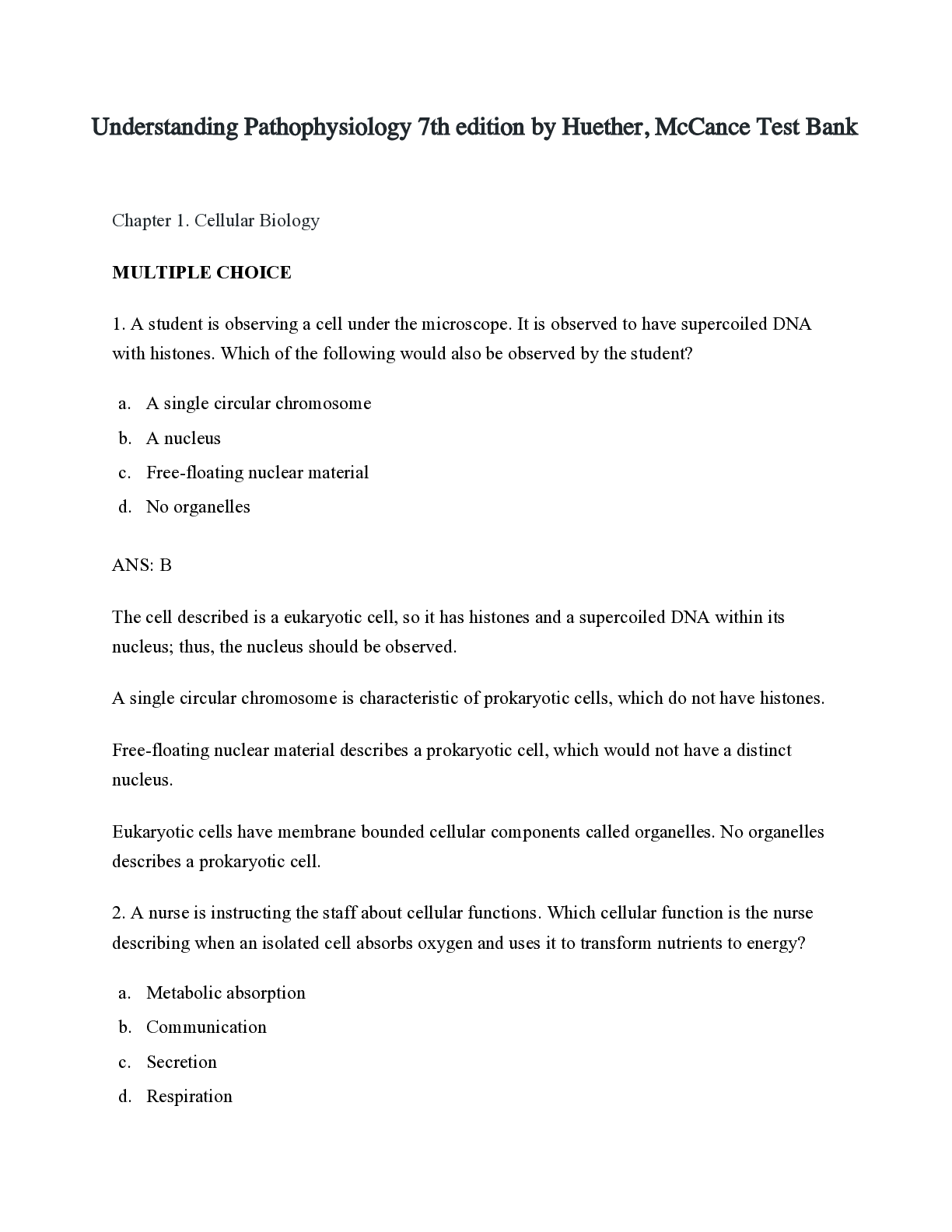
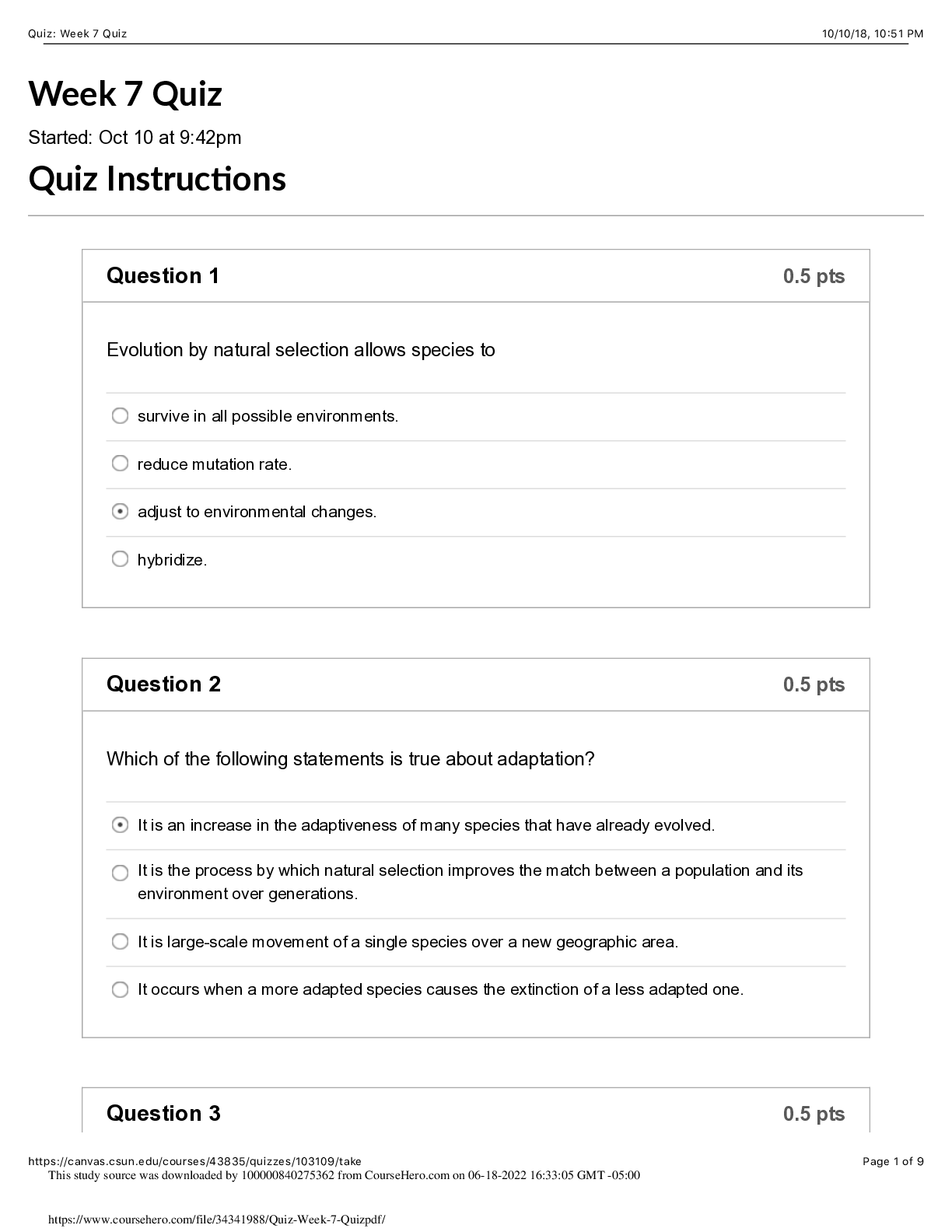
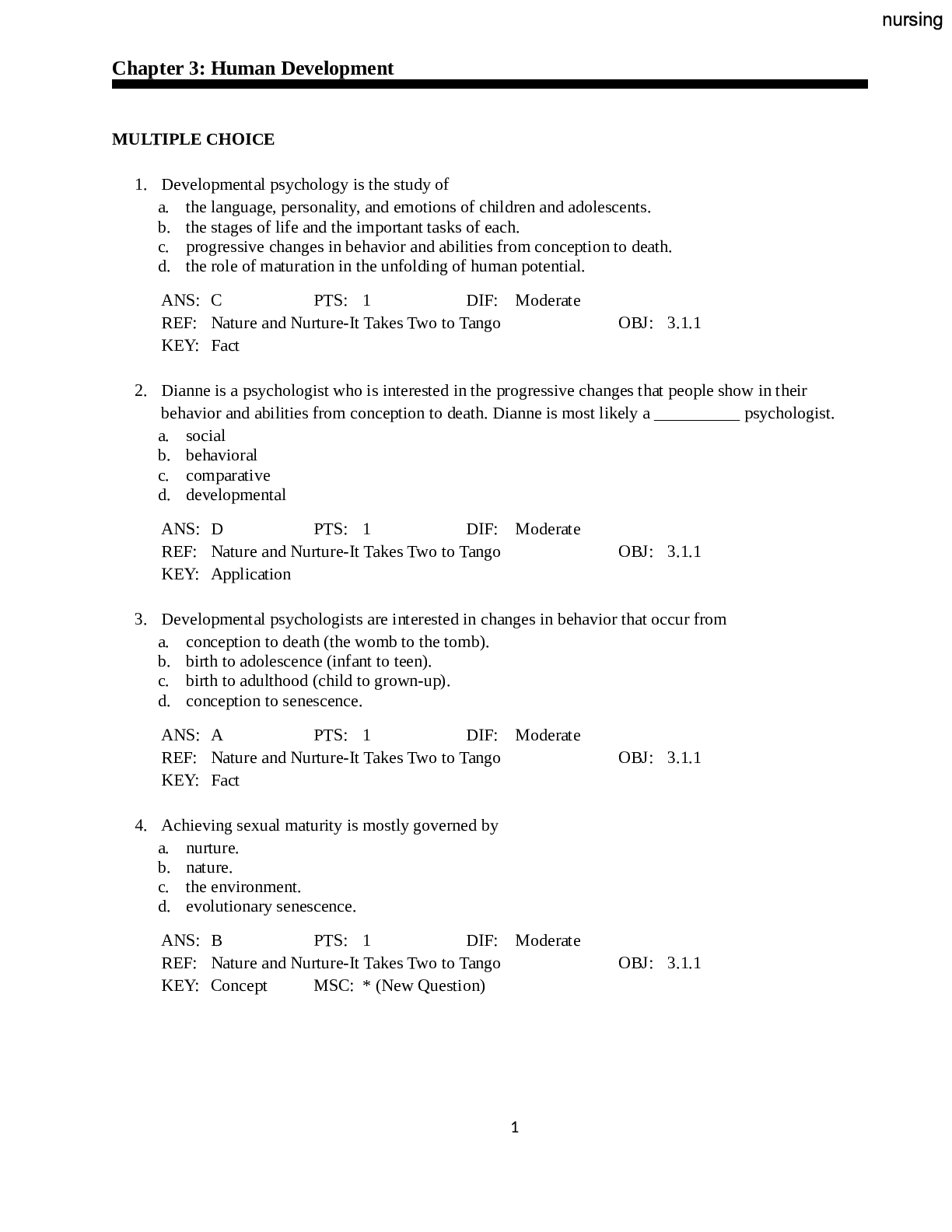

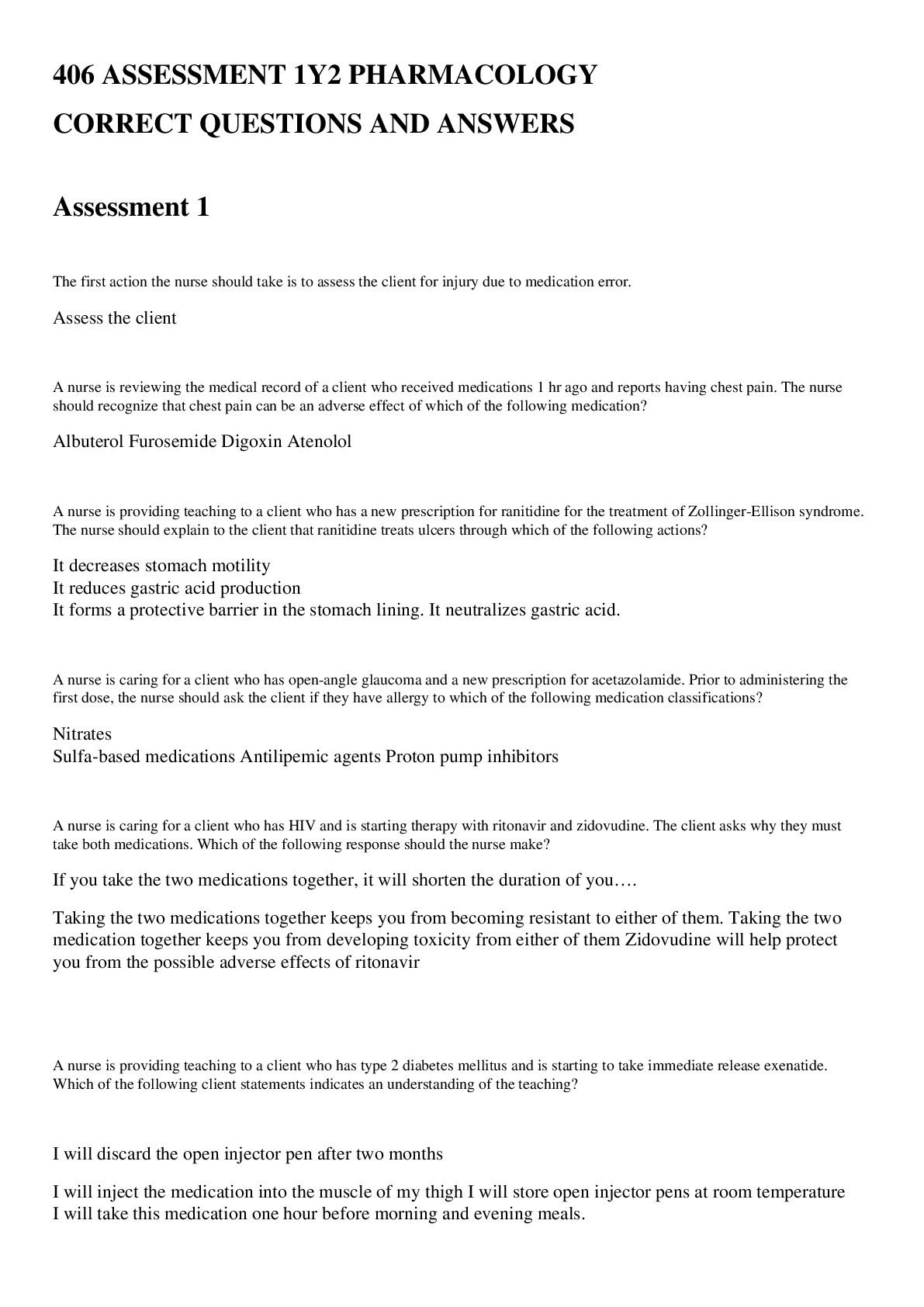
.png)


 Questions and Answers (latest Update), 100% Correct, Download to Score A.png)
 Questions and Answers (latest Update)Download to Score A.png)
 Correct Study Guide, Download to Score A.png)
 Questions and Answers (latest Update), Correct, Download to Score A.png)








